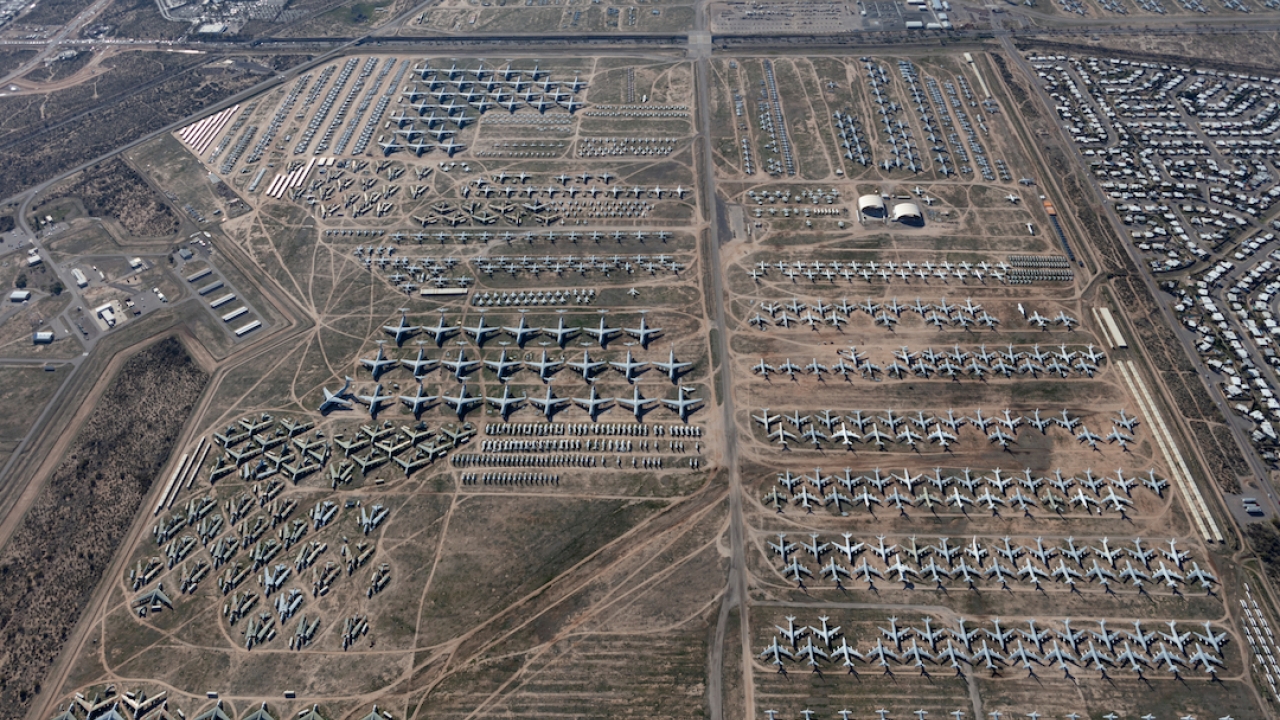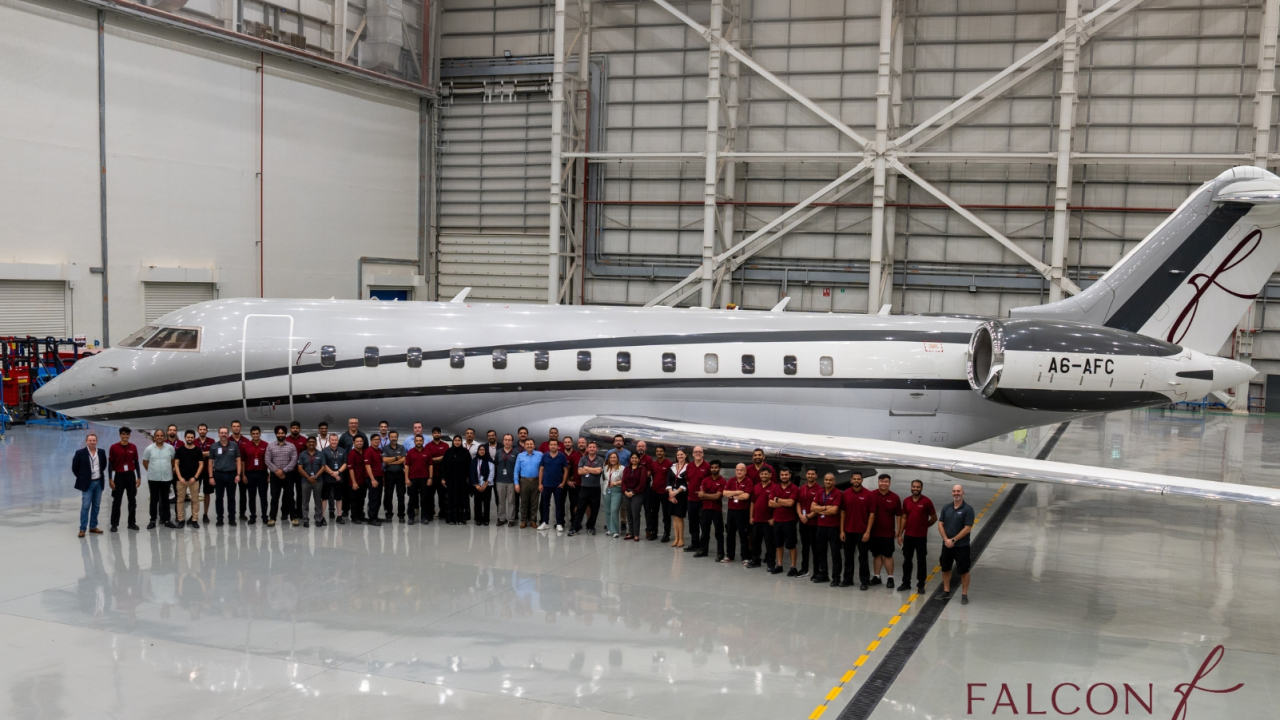Block magic
Blockaviation wants to convince a sceptical air transport industry about the cost savings and efficiency gains of moving fleet data on to a blockchain. Chief executive, John Roberts, explains the grand vision.

So many aircraft to follow: When it comes to managing the paperwork, there’s ample scope for automating processes and streamlining communications. Picture: Barbara Barrett.
No-one working in aviation disputes that – for all the industry’s achievements – efficiency is often lacking in the day-to-day business of flying aircraft.
Cost-cutting has ironed out much wastefulness in recent decades, but managers can only go so far when passenger safety trumps all other concerns.
Without an obsessive focus on maintenance, repair and overhaul (MRO), airlines simply wouldn’t have the trust of the general public.
That makes the mountain of paperwork that accompanies each and every flight a necessary evil in our industry.
When it comes to managing that paperwork, however, there’s ample scope for automating processes and streamlining communications. And, if there’s one technology that can revolutionise this field overnight, it’s blockchain.
“There’s been a lot of scepticism about blockchain in the last few years,” admitted John Roberts, chief executive of Dublin-based Blockaviation, a start-up trying to convince airlines, lessors, manufacturers and MRO firms about the technology’s benefits.
“That hasn’t helped. But I think now, with Covid, we have to find efficiencies to get airlines back in the air. The industry’s been on life support for the last few years.”
Blockaviation’s first – and, perhaps, biggest – challenge is demonstrating to the industry how a technology more often associated with cryptocurrencies can transform record-keeping practices.
To understand this, you first need to understand the cumbersome, inefficient way that owners of aircraft currently establish airworthiness compliance.
Take Blockaviation’s prime targets – lessors.
Today, leasing companies need to maintain a complex, highly detailed paper trail for each and every aircraft in their fleet. Whenever one undergoes routine or mandatory maintenance – a C-check, for example, or remedial work following an airworthiness directive – new documents are added to the pile, proving that the work was completed to the standard required by legislators and regulators.
Other records are maintained for components such as engines and auxiliary power units, detailing any replacement parts and monitoring utilisation rates, like flight hour cycles.
“The aircraft is not worth anything without a fully coherent paper trail,” Roberts emphasised. “When it comes to part-out, the owners of the aircraft can get hammered because of incomplete paper trails, or paper trails that can be questioned.”
Under the current system, records are typically sent to lessors on an ‘ad hoc’ basis, arriving via e-mail as PDFs of scanned, dirty-fingerprinted documents.
Efforts began to digitise this process in 2017, when a new digital standard – Spec 2500 – laid the foundation for “crates” of data that pool these documents together in a computer-readable, XML format. Once stored in this new, digital format, entries can be queried or verified without needing to trawl through hand-written or scanned paperwork.
However, that only solves half the problem.
Physical documents may be frustrating and time-consuming to deal with, but they’re also secure. When you export data to a digital format – even one that includes scanned copies of original paperwork – you greatly increase the risk of fraudulent or doctored records passing by unnoticed.
Any company using Spec 2500 crates of data needs to have total, unwavering faith in their accuracy and authenticity – and that’s where blockchain technology makes a difference.
Blockchains, unlike any other types of data, are designed to be both decentralised and immutable. They exist as shared ledgers – or copies of records – that are stored by multiple, independent parties (each referred to as a “node”) in an encrypted format that’s cross-referenced to ensure that none of the contents can be altered.
If an anomaly arose in one copy, that version of the chain would be broken and the data it contains invalidated. Blockchains thereby create trust in data – without needing an author or inspector to vouch for it.
“Blockchain, very simply, is a secure network,” Roberts explained. “And that’s what we’re using it as. We’re using it as a service to notarise these transactions as parts move and aircraft move and records move from place to place. It’s just a highly secure network that creates trust.
“It allows you to say, ‘Okay, forget it, we know that’s what happened on that date. There’s the record of it. Next’.”
When you combine the verifiable accuracy of blockchain data with the digital convenience of Spec 2500 records, you begin to realise what Blockaviation is pitching to its customers.
“The costs of moving aircraft around with their records is absolutely incredible,” Roberts noted. “So the efficiencies that can be garnered here through a network, which we can digitise in a standardised way and create standardised processes, are enormous.”
Lessors are a logical first target for the company, as they often take delivery of brand new aircraft and must then entrust third-parties – airline lessees, their customers – with the onerous task of record-keeping.
As long as the aircraft is delivered with Spec 2500 documentation, a lessor can give it a single, verifiable digital identity from day one of its lifespan. That identity exists on the blockchain as what Roberts calls a “networked record” that’s visible to all authorised parties – reducing their dependence on locally stored asset management platforms. Its existence removes any need for owners and operators to use locally stored asset management platforms.
Sceptics rightly warn that this raises questions about the ownership and control of data.
At the time of writing, Blockaviation had recruited just four customers – including lessors SMBC and Aircastle – who collectively manage 1,200 aircraft.
That’s a fraction of the global commercial fleet. But, if Roberts wins over a larger share of the industry, then the pool of data stored on his network will be so valuable and strategically important that it would be reckless to entrust it to a single, corporate entity like Blockaviation.
Yet here, too, the decentralised nature of blockchains provides the solution.
“We want Aircraft Leasing Ireland to buy a node,” Roberts said, referring to one digital copy of the distributed ledger that forms the backbone of the network. “We want [multinational information technology company] SITA, for example, to buy a node; the International Air Transport Association (IATA) to buy a node; one of the big leasing companies to buy a node. Then we’ve got the governance council.”
By distributing its infrastructure between key industry bodies, Blockaviation can ensure that the access rights and privileges given to all parties – including itself – arise from an external consensus mechanism.
That, essentially, means building a network and then handing it over to the industry – for a fee, of course.
“There's nobody else doing what we’re doing,” Roberts emphasised. “We're building essential industry infrastructure. So it’s conceivable that, eventually, it’ll be owned by the industry.”
Stay up to date
Subscribe to the free Times Aerospace newsletter and receive the latest content every week. We'll never share your email address.


